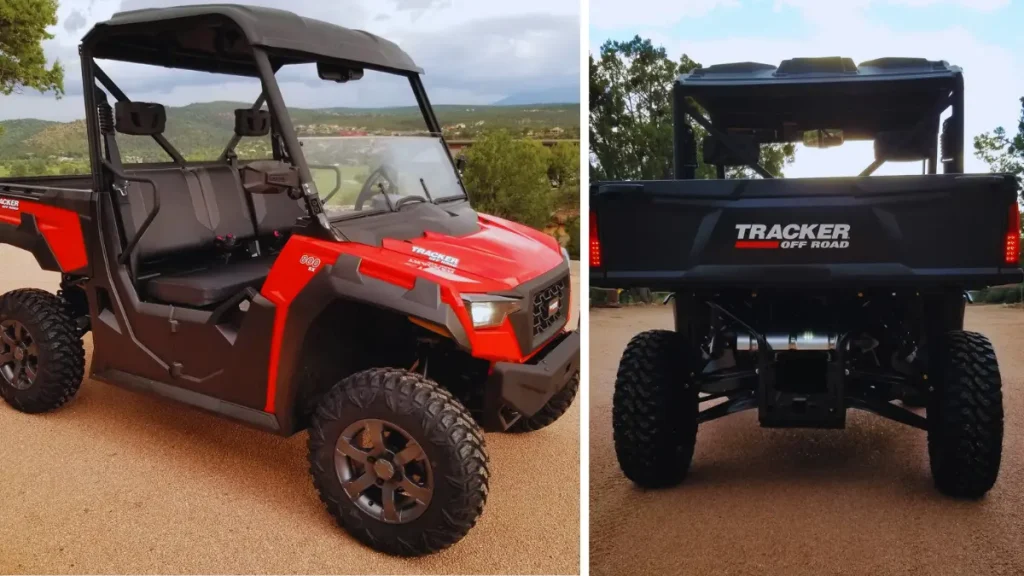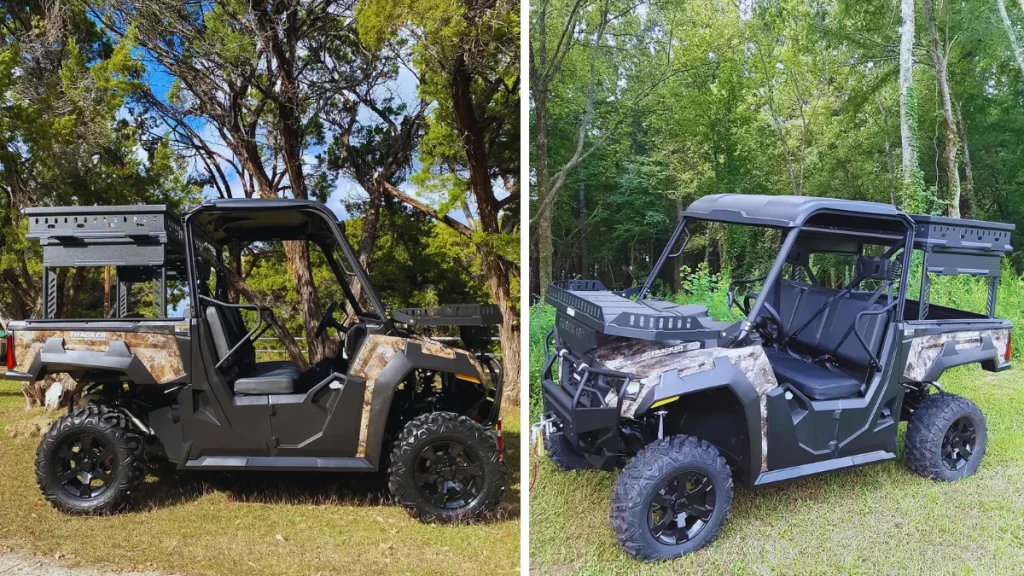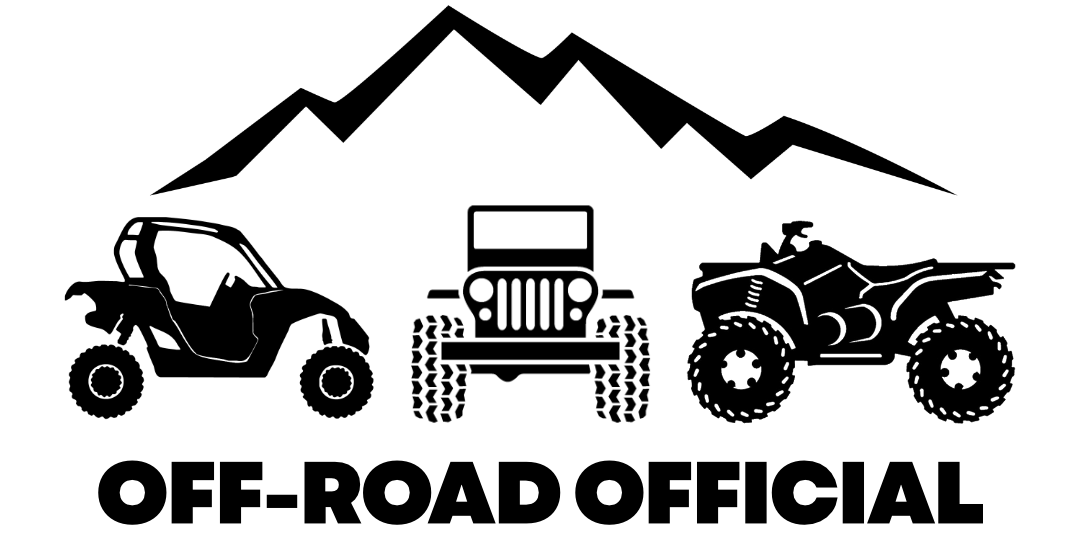For those who have visited their local Bass Pro Shops location over the last few years, you may have one of a handful of different Tracker UTVs on display.
The rugged yet stylish designs of these models will catch your eye, but so will the reasonable price tags that accompany them. They even make the list of top cheap side-by-sides for 2024.
Some Tracker UTVs are even priced thousands of dollars cheaper than bigger name competitive models like the Honda Pioneer 700 or Honda Pioneer 1000.
So do they actually make for good values, or are you saving a few thousand dollars just to deal with a huge headache down the road?
This guide will help you answer that question for yourself by offering an unbiased review of Tracker UTVs, including:
- Available models and prices
- Who actually makes Tracker UTVs (hint: it ain’t Tracker)
- How is their build quality?
- How well do they perform?
- What Tracker UTV owners like
- What Tracker UTV owners dislike
- Final word – are they worth it?
Tracker also offers a line of four wheelers, and you can see how they stack up in this review of Tracker ATVs.
Tracker UTV Models

Tracker currently offers eight different UTV/side-by-side models:
- Tracker OX400 ($7,999)
- Tracker OX EV ($12,999)
- Tracker EV IS ($13,999)
- Tracker 800SX ($14,399)
- Tracker 800SX Crew ($15,999)
- Tracker 800SX LE ($15,899)
- Tracker 800SX LE Crew ($17,599)
- Tracker 800SX Waterfowl Crew ($20,999)
There are two electric options and six gas-powered options, with no youth models like the Tracker 90 ATV.
The OX models are your less powerful models meant for very casual driving and light work tasks.
The 800 models are powerful, utility-based working models that excel at working tasks but also have underrated recreational appeal.
The Tracker 800 models are made up of two three-seater options and three six-seater crew options, with different trim levels and accessories.
The Waterfowl Crew is Tracker’s hunting model, tailored to hauling gear and game back and forth to your favorite hunting spot.

Who Makes Tracker UTVs?
Tracker Off Road partners with Textron to help design and assemble their UTVs, which takes place in Textron’s American plants by US workers.
Most Tracker UTVs bear a striking resemblance to Arctic Cat UTVs (also made by Textron), and much of their assembly takes place in the same Textron plant that serves as Arctic Cat’s headquarters in Minnesota.
But Tracker UTVs are assembled using a number of parts and components manufactured overseas, so they’re not technically “American-made” as some may claim.
But Textron sources quality components from overseas.
And they make some of the most technologically advanced vehicles and aircraft for the government/military, so they have a pretty good handle on what they’re doing.
You can read more detail on Tectron and the manufacturing process in this guide to who actually makes Tracker Off Road vehicles.
Tracker Side By Side Reviews – Build Quality & Performance
Engines
Tracker UTV engines are one of their main selling points, being both durable and dependable.
The engines in the OX models are four stroke, single-cylinder engines that are much less powerful than what you’ll find in the 800 series, getting around 14 HP.
The 800 series makes use of a four-stroke, 812 cc three-cylinder engine with a max output of around 50 HP.
These engines feature excellent low-end torque and power, with the ability to make it through pretty much any trail or terrain without an issue.
Mud, sand, snow, steep hills, or puddles – the 800 models have no issues with.
The engines are made to work, so while they do offer good overall recreational appeal, top-end speed is not their strong suit.
Where the engines really stand out is with their noise levels.
Tracker really puts an emphasis on these engines being as quiet as possible as a way to stand out from the bigger name models, and as a result Tracker UTVs are almost whisper quiet.
In fact, the decibel levels they put out are almost 10 decibels lower than what you’ll find in well-known competitive models like the Polaris Rangers and Can Am Defenders.
They’re not quite as quiet as Tracker’s electric 4×4 UTV model, but they aren’t far off.
Drivetrains
The Tracker OX models are strictly 2WD models, while the EV iS and the 800 models all offer selectable 4WD via a switch on the dash.
The 800’s also offer rear locking differential to keep the wheels from spinning and slipping.
When you throw any of these models into 4WD and lock the differential, there’s really not a steep grade you can’t climb in them.
You’ll want to turn this off when making sharp turns in the yard or on the driveway so you don’t leave tire marks or tear up the grass.
Each Tracker UTV makes use of a fully automatic CVT transmission, which handles the shifting for you and makes the process smooth.
The Tracker 800 series features both a Low and High gear, along with Neutral, Reverse, and Park settings.
Tracker UTV frames are also built with a vibration reduction design, which also helps minimize the noise when driving.
Suspensions
The suspension systems in Tracker UTVs are also a big selling point.
The electric model makes use of a Macpherson struts in the front and rear, while each of the 800 models are equipped with independent double A-Arms in the front and rear.
The suspension travel in these models is excellent, at around 10 inches up front and 9.5 inches in the rear.
This amount of travel helps to keep the tires in contact with the ground at all times for better traction, and provides for a smooth ride through even the bumpiest terrain and rutted trails.
The 800 models also offer 5-way preload adjustable shocks so you can find the perfect setting for certain terrains and your riding style.
Increasing the preload settings will also give the UTV a slightly higher ground clearance.
The 800’s all offer 12.5 inches of ground clearance, making them able to clear most obstacles or ruts in the trail.
Tires & Brakes
The OX models both feature 23-inch tires, the EV iS features 25-inch tires, and the 800 models each offer 26-inch tires in the front and rear.
These off-road stock tires are wider in the rear and offer good traction in most terrains.
All-wheel hydraulic disc brakes offer plenty of stopping power for each Tracker UTV, regardless of the terrain.
Dimensions & Capacities
From an overall build and size perspective, Tracker UTVs are about average when compared to the rest of the industry.
One of the most impressive features for the 800 models is their towing and hauling capacities.
The 800’s can tow up to 2,000 lbs and haul up to 1,000 lbs in the rear cargo bed – putting them right in line with the best in the industry in this regard.
And these machines are powerful enough that you can put the full hauling capacity in the rear bed and they’ll still do just fine topping steep hills and making it through rough terrain.
Electronic power steering comes in handy in these situations, making for easy handling and control of the vehicle no matter the total payload weight.

Design & Durability
The design of Tracker UTVs fits with most other utility-focused UTVs, with a rugged yet stylish look.
In fact, it’s hard to tell them apart from some of the more expensive models when compared next to each other and ignoring the labels.
And the parts, plastics, and components of these vehicles hold up well to the abuses of off-road and trail riding.
Most models only feature 1-3 color options to choose from.
What Tracker UTV Owners Like
- Some of the better values in the industry, with their performance to price hard to beat.
- The engines in these machines are almost whisper quiet, with noise levels at idle being around 10 decibels less than what you’ll find in competitive models like the Polaris Rangers or Can Am Defenders.
- Most models offer excellent storage space with a combo of under seat and behind-seat compartments.
- Full-length skid plates run the underside of the vehicle for protection if bottoming out and helping to slide when stuck on an incline in softer terrain.
- Electronic Power Steering comes standard in the 800’s making for easy handling and control.
- Excellent hauling and towing capacities – rear cargo bed with lift assist and a good high tilting angle makes for easy dumping.
- There are grooves in the flooring that serve as drains so water easily runs out when riding or washing.
- Digital display with speedometer, odometer, trip meter, tachometer, gear indicator, fuel gauge, intake and radiator temperature gauge, and clock.
- A toolkit is included in a small bag under the dash, which includes every tool you would need to perform maintenance if out riding.
What Tracker UTV Owners Dislike
- Older models are known to experience excessive clutch drag which leads to hard shifting, a whining noise from the belt, and poor initial throttle response resulting in the vehicle lurching – new models have an upgraded clutch which minimizes these issues.
- Older models were known to suffer from faulty or broken gear shifter cables, but the new clutch has minimized this in newer machines.
- Warm air from the radiator/fan tends to vent into the cab through the dash and other areas making riding on hot days uncomfy.
- Tracker UTVs lack a parking brake, which can come in handy if you live in a mountainous area.
- These models have a tendency to free roll when heading down hills or other steep terrain which sometimes makes for the need to ride the brakes.
- The dump bed liners have a tendency to warp and crack over time due to heat from the muffler that is located just below the bed.
- The cup holders in some models are too small to hold your standard mug or tumbler.
- Warranty or repair work through Bass Pro Shops can be iffy.
- Getting replacement parts through Textron can be slow, with your UTV potentially sitting in the shop for months during the wait.
Final Word
Tracker UTVs actually make for one of the best “budget UTVs” in the industry.
In terms of both price and performance, they compare quite similarly to CFMoto’s line of utility vehicles and side by sides, as well as Intimidator’s American-made UTVs.
And their prices are farther apart than their performance level when comparing them to bigger names from Polaris, Can Am, Honda, and Kawasaki.
There are definitely some drawbacks, but you’ll find those with any model. Overall, Tracker UTVs make for good, well-rounded options at reasonable price points.

